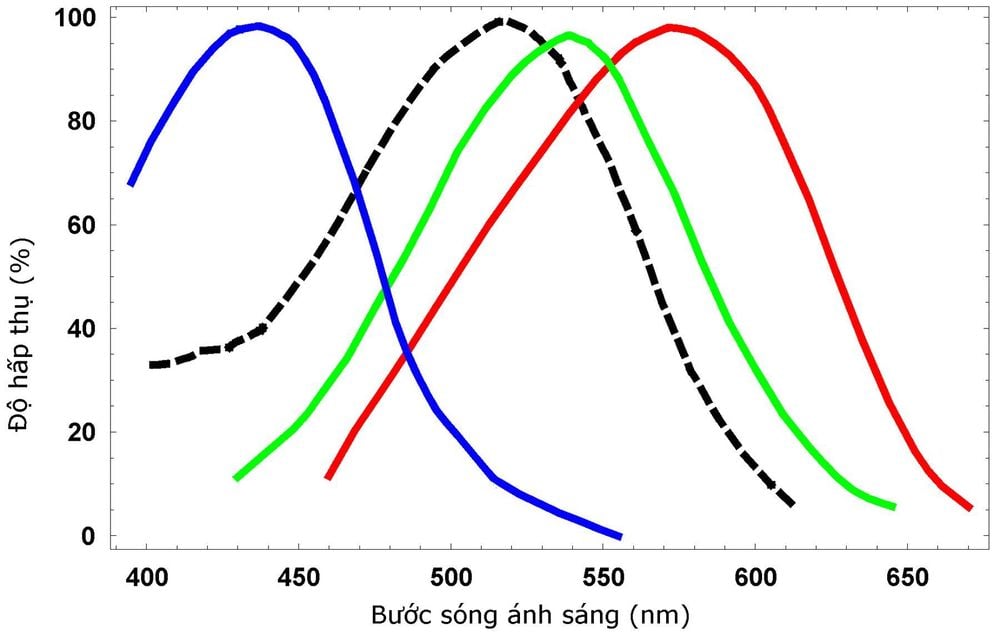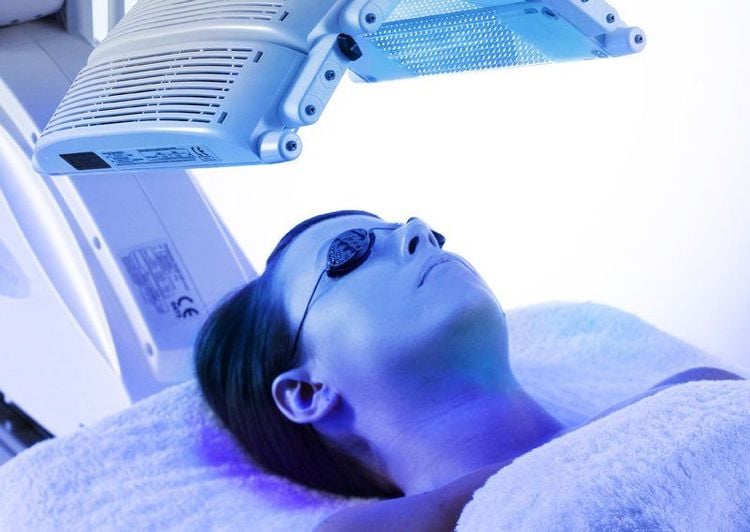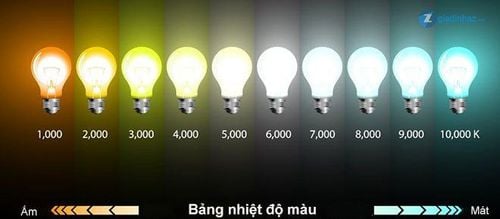This article is professionally reviewed by an ophthalmologist from the Department of General Medicine & Internal Medicine, Vinmec Hai Phong International Hospital.
Light comes in many different colors, and their effects on the eyes vary. So how does light color impact the eyes, and which color is best for eye health?
1. Overview of Light
Light consists of two main components: visible light and invisible light. For visible light, the human eye can perceive wavelengths ranging from 380 to 760 nm. Below 380 nm lies the ultraviolet spectrum, and above 760 nm belongs to the infrared spectrum—both of which are part of the invisible light spectrum that humans cannot see.
Every day, the human eye is exposed to various colors of light, each with different wavelengths. The "colors" that the human eye sees and describes are actually combinations of multiple light waves with different wavelengths. For instance, blue light consists of short wavelengths, while red light has long wavelengths. Each color of light has different effects on the human eye, which in turn requires tailored care to mitigate these effects.

2. Special Light Colors
Blue light is a unique and beneficial part of the light spectrum, playing a key role in initiating and regulating the human circadian rhythm. This rhythm helps the body naturally wake up in the morning (as blue light stimulates the body to become active) and prepare for sleep at night (when the absence of blue light stimulation signals the body to wind down).
Blue light therapy is also effective in treating seasonal affective disorder (SAD), a type of depression caused by a lack of natural daylight. This therapy can be as effective as using an antidepressant.
However, natural blue light is the primary beneficial source for humans. Overexposure to artificial blue light from electronic device screens (such as smartphones, tablets, laptops), LED lights, and fluorescent bulbs can harm the eyes and disrupt sleep. During the day, blue light can enhance mood and concentration, but at night, it can disturb the circadian rhythm. This disruption prevents the body from recognizing the appropriate wake-sleep cycles, leading to insufficient melatonin production, which negatively affects memory, emotions, and the regulation of hormonal balance.

Disruptions in melatonin production due to excessive exposure to blue light can lead to more serious issues beyond insomnia, including high blood pressure, diabetes, migraines, and more. A good way to reduce harmful blue light exposure is to limit the time spent using devices that emit blue light, such as computer screens and smartphones. If this is not feasible due to work requirements, consider using blue light filters designed for computers.
Additionally, consider replacing white fluorescent and white LED bulbs with warm white lights, halogen bulbs, or incandescent bulbs. Ideally, it’s best to avoid using phones, tablets, laptops, and similar devices before bedtime.

Other colors that can affect the human eye include green and yellow. Green light can also help regulate the circadian rhythm. However, excessive exposure to green light in the evening, similar to blue light, can disrupt the circadian rhythm. Yellow light has been shown to be effective in protecting the retina of patients overexposed to blue light, as it creates the best contrast. Sunglasses with yellow-tinted lenses are effective not only in filtering ultraviolet (UV) rays but also in blocking blue light.
To arrange an appointment, please call HOTLINE or make your reservation directly HERE. You may also download the MyVinmec app to schedule appointments faster and manage your reservations more conveniently.
Articles refer to sources: aao.org and eastwesteye.com
To arrange an appointment, please call HOTLINE or make your reservation directly HERE. You may also download the MyVinmec app to schedule appointments faster and manage your reservations more conveniently.


